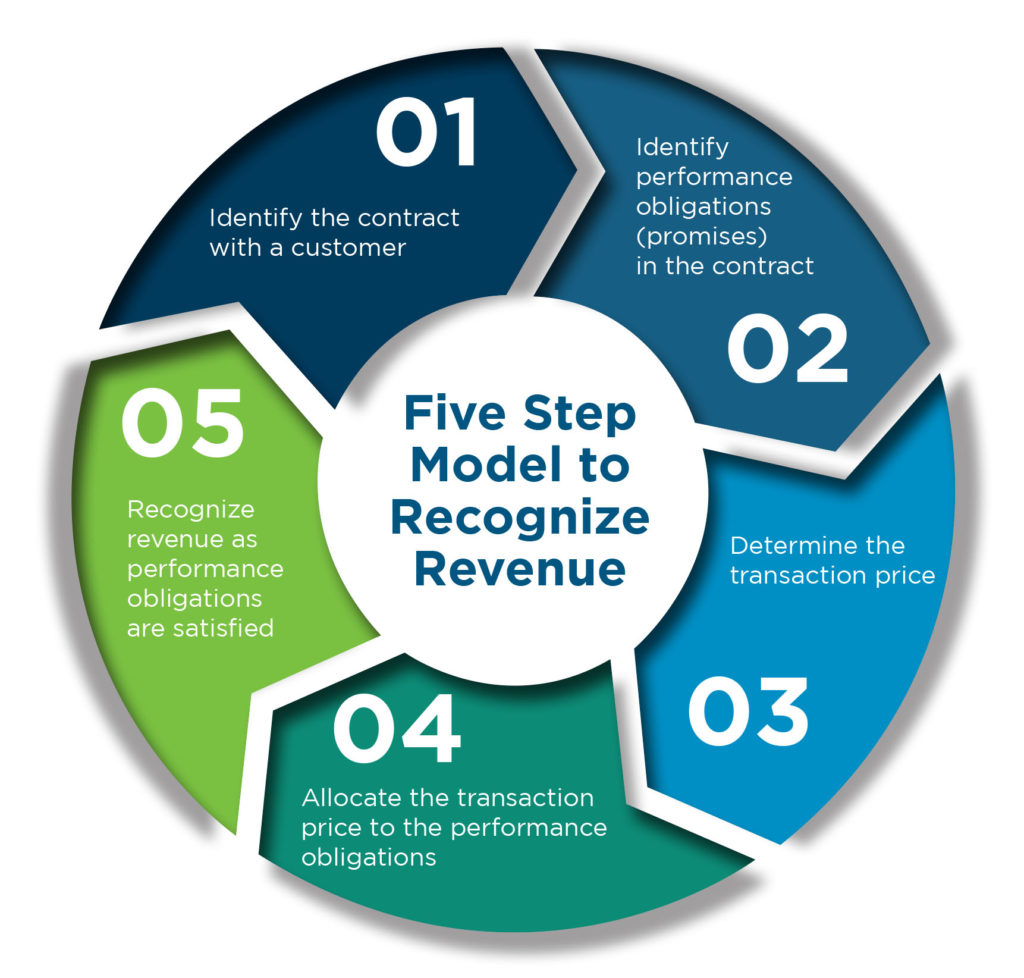Article written by:
Paul Anderson, CPA
Senior Director
The new revenue accounting standard (ASC 606, Revenue from Contracts with Customers), developed a five-step model for recognizing revenue that will now be applied throughout GAAP, replacing multiple different criteria, thus achieving one of the goals of the new standard; consistency. The only exceptions are contracts that are considered a lease, an insurance contract, a nonmonetary exchange, a guarantee or those involving financial instruments.
The first step is to determine if a contract exists and whether that contract is with a customer. This assessment is made on a contract-by-contract basis. As a practical expedient, similar contracts may be considered together if management expects the effects on the financial statements would not be materially different.
The standard defines the contract as:
- An agreement between two or more parties that creates enforceable rights and obligations.
The contract can be written, oral or implied, and is dictated by the customary business practices of the entity. It can be as simple as a retailer where the customer picks up an item and pays for it, and can be as complex as an agreement to build a building. Determining if a contract is legally enforceable depends on interpretation of the law, and can be challenging, especially if involving the laws of different states or foreign countries.
The customer is defined as:
- A party that has contracted with an entity to obtain goods or services that are an output of the entity’s ordinary activities in exchange for consideration.
In most cases, identifying the customer is pretty straightforward. However, there are always exceptions, and this definition has its fair share. Be wary of contracts where both parties share in risks and benefits of the transaction, such as developing an asset, or arrangements involving multiple parties. It is possible that the role a company plays is a transaction may be more akin to an agent, rather than a principal in the transaction.
The new standard requires that the contract be accounted for when all of the following are met:
- The parties to the contract have approved the contract,
- The company can identify each party’s rights regarding the goods and services to be transferred,
- The company can identify the payment terms,
- The contract has commercial substance, and
- Collection of the consideration is considered probable
Once the criteria above has been met, there is no reassessment until there has been a change in the facts and circumstances. Revenue from contracts not meeting the above criteria is recognized when the company has no remaining obligation and all consideration has been received or the contract has been terminated and consideration is non-refundable.
Determining the term of the contract may require the most judgment. The term is defined as the period when the parties to the contract have present and enforceable rights and obligations. This is important as it affects the determination and allocation of the transaction price, and the period over which revenue is recognized. The company must consider whether any termination clauses create enforceable rights under the contract.
Companies with multiple contracts with the same customer will need to evaluate whether the accounting for the contracts should be combined and accounted for as one contract. This is true when:
- The multiple contracts are negotiated as one package
- The amount paid in one contract depends on the price or performance of another contract
- The goods and services promised in the contracts are a single performance obligation.
Think of purchasing an auto and an extended warranty as an example of multiple contracts that should be combined.
Lastly, a change to the scope of the contract, the price or both is considered a modification to the contract. A modification exists when both parties to the contract approve the modification based on the parties’ customary business practices. A contract modification may be accounted for as a separate contract, or as part of an existing contract, depending on the change. Again, judgement is involved in making that determination.
